
Modern vs Contemporary Furniture
Modern vs Contemporary Furniture Differences & Styles
In the realm of interior design, “modern vs contemporary furniture design” are terms often used interchangeably, yet they differ in essence.
Modern furniture is rooted in the mid-century era, defined by clean lines and minimalism, often referred to as “midcentury modern furniture.” In contrast, contemporary furniture reflects current design trends, constantly evolving and adapting to the latest styles.
When curating a living space, understanding these distinctions is vital. While modern furniture offers timeless elegance, contemporary design boasts dynamic versatility. Whether you’re drawn to the sleek aesthetics of modern design or the adaptable nature of contemporary decor, recognizing their nuances ensures your home resonates with your desired ambience.
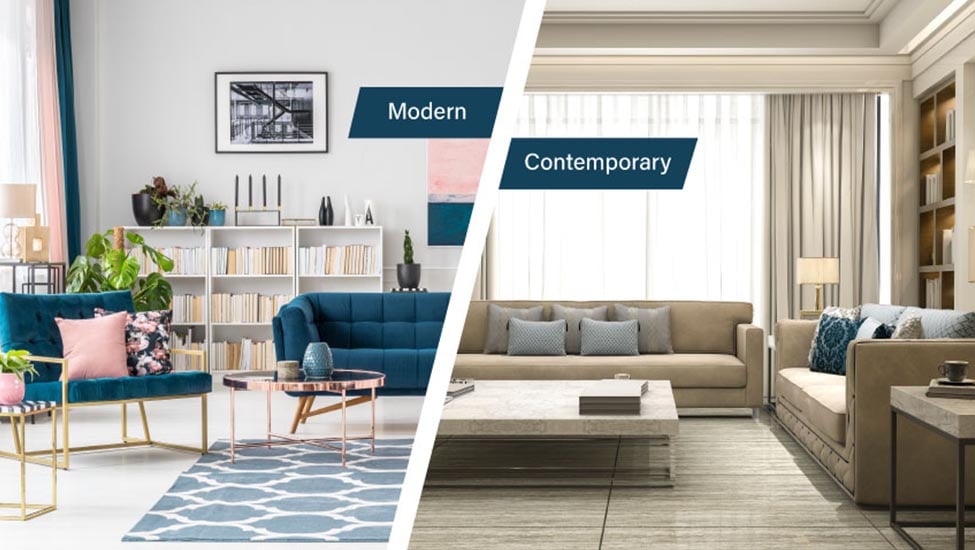
What is Modern Furniture?
The term “modern furniture” often evokes images of sleek lines, minimalistic designs, and a certain timeless elegance. Originating in the early to mid-20th century, modern furniture design, distinct from contemporary furniture, was heavily influenced by the Modernism movement, which sought to break away from traditional styles. This was a period where function reigned supreme, leading to pieces that were not just aesthetically pleasing but also incredibly practical.
One of the most emblematic representatives of this style is mid-century modern furniture, characterized by its organic forms, clean lines, and a focus on diverse materials. The ethos behind modern home furniture is deeply rooted in the mantra of simplicity, often resulting in designs that are free from unnecessary embellishments. Moreover, modern living furniture embraces a variety of materials – from polished metal and glass to rich woods – all used judiciously to maintain that balance between form and function, setting it apart from contemporary furniture design.
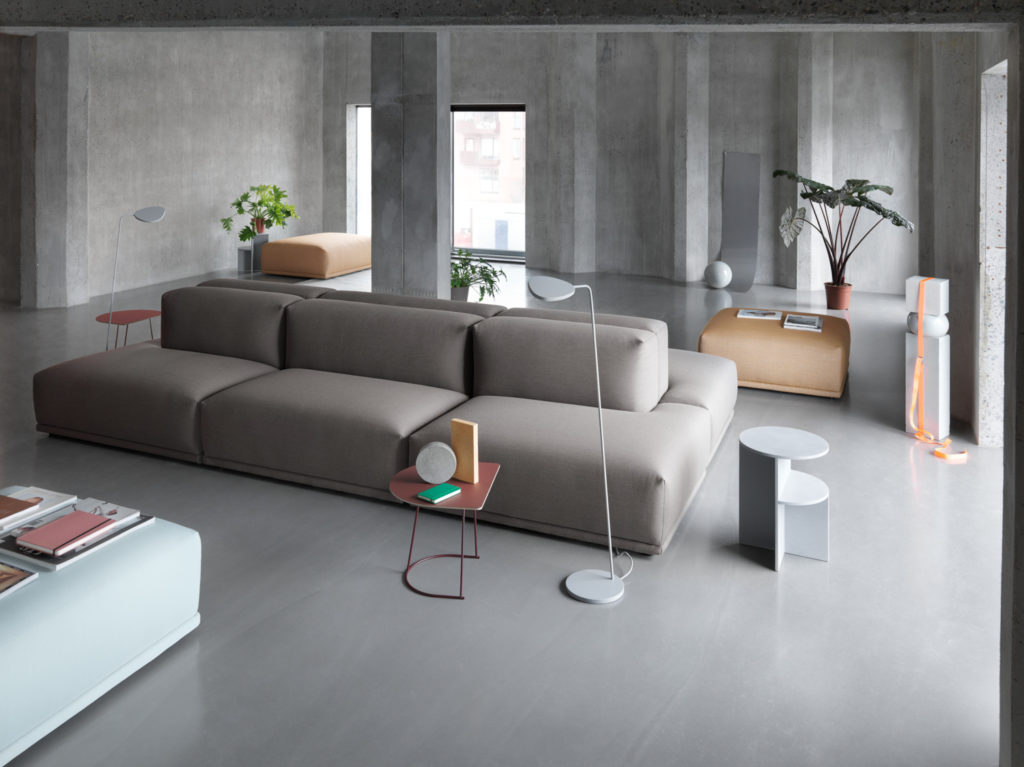
Key Characteristics of Modern Furniture
When diving into the realm of modern furniture, certain defining traits set it apart. Recognizing these can help in distinguishing genuine modern designs from imitations or hybrids. Here are some of the most prominent characteristics:
- Simplicity in Design: Modern furniture tends to have a straightforward design, focusing on clean lines and minimal ornamentation. The mantra is often “less is more.”
- Functional Form: Each piece is designed with functionality in mind. There’s a practical reason behind every curve, fold, or angle.
- Use of Diverse Materials: Modern furniture often incorporates a mix of materials. It’s not unusual to find a combination of wood, metal, glass, or even plastic in a single piece.
- Neutral and Earthy Colors: While the modern design does play with colour, it often leans towards neutral and earthy tones. Think blacks, whites, browns, and tans, with occasional pops of bolder colours.
- Open and Airy Design: Many modern furniture pieces have an open design, creating a sense of space and lightness, ideal for modern living spaces.
- Uncluttered and Sleek: The absence of intricate details and a focus on sleek surfaces make modern furniture easily recognizable.
- Geometric and Organic Forms: Whether it’s the sharp angles of a coffee table or the gentle curve of a lounge chair, modern furniture often plays with geometric and organic forms, sometimes even in the same piece.

Icons of Modernism: Three Timeless Furniture Masterpieces
Eames Lounge Chair and Ottoman by Charles and Ray Eames:
Introduced in 1956, the Eames Lounge Chair and accompanying Ottoman have become synonymous with modern furniture design. Crafted with fine leather and moulded plywood, this chair offers an elegant blend of luxury and comfort. It was designed by the dynamic duo Charles and Ray Eames, who are renowned for their contributions to architecture, furniture design, and industrial design.
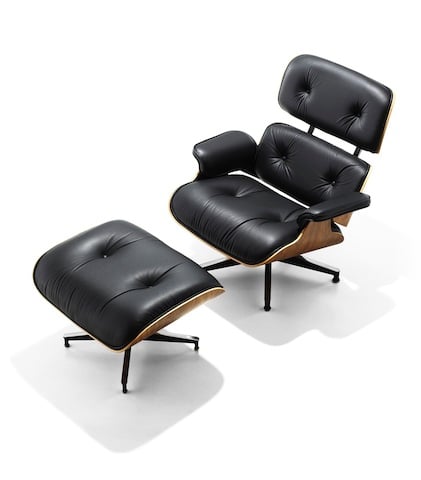
Barcelona Chair by Ludwig Mies van der Rohe:
First showcased at the International Exposition of 1929 in Barcelona, the Barcelona Chair epitomizes modernism with its simple, refined form. Made of sleek steel and plush leather cushions, its design rejects the superfluous in favour of clear functionality. Ludwig Mies van der Rohe, a pioneering figure in modernist architecture, was the genius behind this timeless piece.
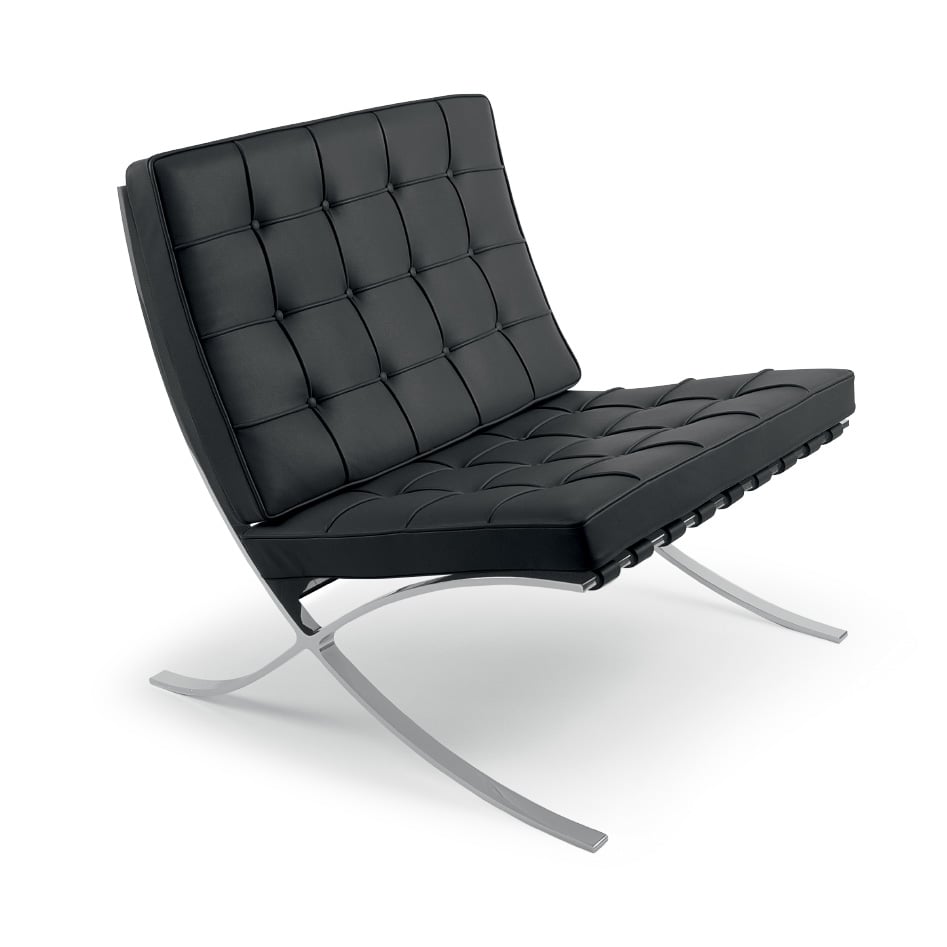
Tulip Table by Eero Saarinen:
Seeking to eliminate the “slum of legs” found under chairs and tables, Eero Saarinen designed the Tulip Table in the 1950s. With its pedestal base and curvilinear design, this table exemplifies mid-century modern aesthetics. Saarinen’s groundbreaking designs and architectural genius have earned him a significant spot in the annals of modern design.
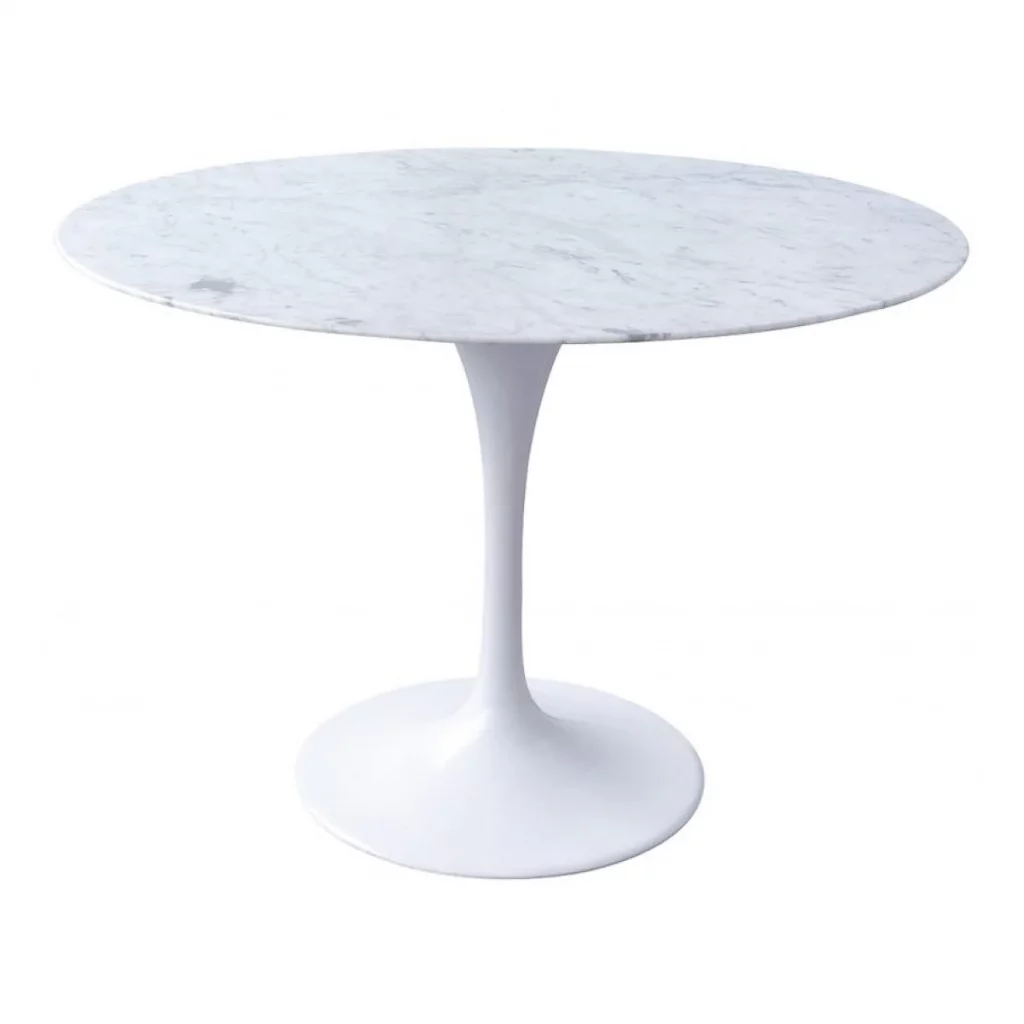
What is Contemporary Furniture?
Representing the ever-changing trends and sensibilities of the current era, contemporary furniture design is often seen as a reflection of the present moment. Unlike the steadfast aesthetic associated with modern furniture, the style of contemporary design is understood to be dynamic and constantly evolving. This approach is believed to capture the zeitgeist of the present, merging a myriad of influences and inspirations. Typically not confined to a particular period or pattern, it is often influenced by elements from various design eras. Due to its inherent adaptability, contemporary home furniture can seamlessly incorporate cutting-edge technology, sustainable materials, and innovative designs. With its unique characteristic of being both current and timeless, contemporary bedroom furniture, among other pieces, is often considered to perfectly cater to the subtleties of modern living, distinguishing itself from other design genres.
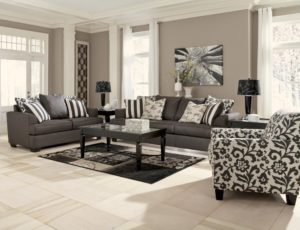
Key Characteristics of Contemporary Furniture
Diving into the characteristics of contemporary furniture, one finds an evolving palette of design elements that cater to today’s ever-changing tastes. Contemporary, by its very definition, means “of the moment,” making this style fluid and reflective of current trends. Here’s what you can typically expect when examining contemporary furniture:
- Versatility in Design: Contemporary furniture is adaptable. Its design allows it to fit in various settings, whether in a city loft or a suburban home.
- Eclectic Mix of Materials: Similar to modern furniture, contemporary pieces also utilize a mix of materials but often with a fresher twist, integrating sustainable or recycled materials.
- Bold and Contrasting Colors: While neutral shades remain popular, contemporary furniture isn’t afraid to embrace bold colours, often in stark contrast, to make a statement.
- Innovative and Fluid Forms: The forms are not bound by tradition. Fluid shapes, asymmetry, and unexpected design features are hallmarks of contemporary pieces.
- Texture Play: Whether it’s a tactile fabric on a sofa or a brushed finish on metal, playing with textures is a distinctive trait of contemporary furniture.
- Modular and Multi-functional: With urban living spaces becoming more compact, contemporary furniture often focuses on being modular and multi-functional, serving multiple purposes to maximize space.
- Global Influences: With the world becoming more interconnected, contemporary designs often draw inspiration from various cultures, fusing different design philosophies to create something unique.
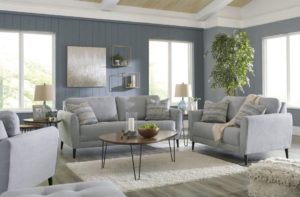
Trailblazers of Today: Three Contemporary Furniture Standouts
Ro Chair by Jaime Hayon:
A Spanish artist-designer known for his playful aesthetics, Jaime Hayon’s Ro Chair for Fritz Hansen is a fusion of comfort and sculptural design. With its spacious yet inviting form, the Ro Chair encapsulates modern luxury and emphasizes individual relaxation.
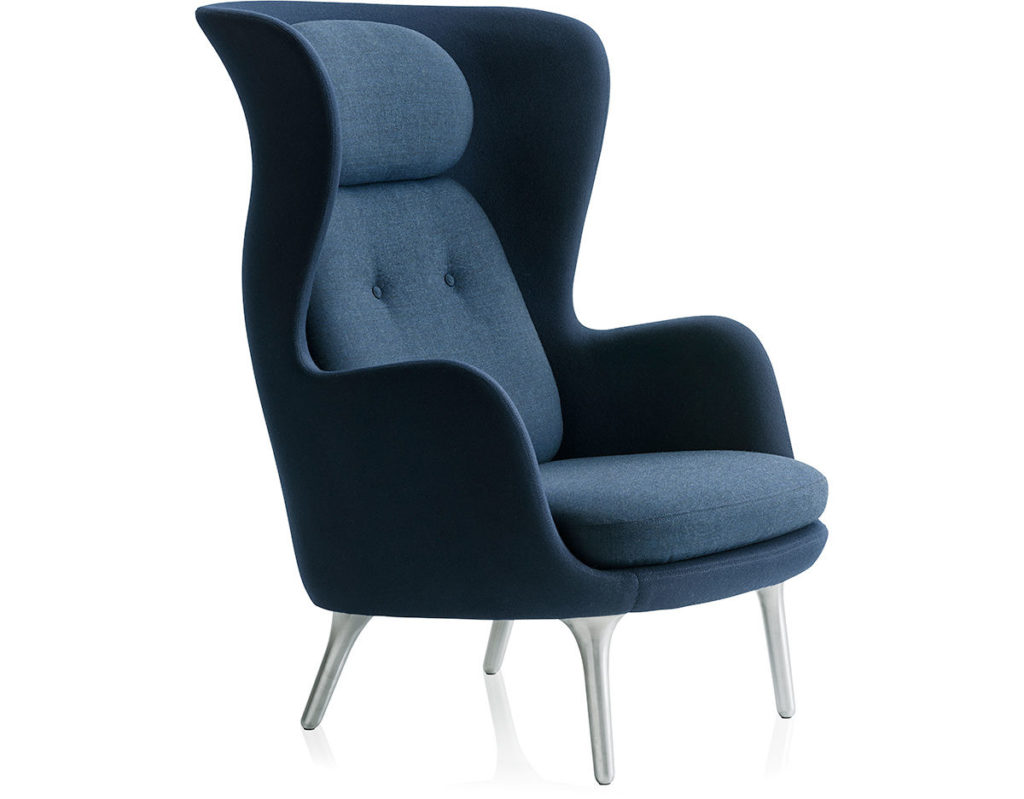
Ploum Sofa by Ronan & Erwan Bouroullec:
The French designer duo, Ronan and Erwan Bouroullec are known for their experimental approach to design. Their Ploum Sofa for Ligne Roset is a testament to this, offering optimal comfort and flexibility. The organic shape and use of stretchy fabric adapt to the user, making it an iconic piece in contemporary lounges.

Paper Table by Studio Job:
Nynke Tynagel and Job Smeets, the dynamic pair behind Studio Job, are famous for their avant-garde vision. The Paper Table, crafted for Moooi, mirrors the duo’s love for storytelling and whimsy. Made entirely of paper, cardboard, and paper-mâché, it challenges conventional materials and showcases the boundless possibilities in contemporary design.
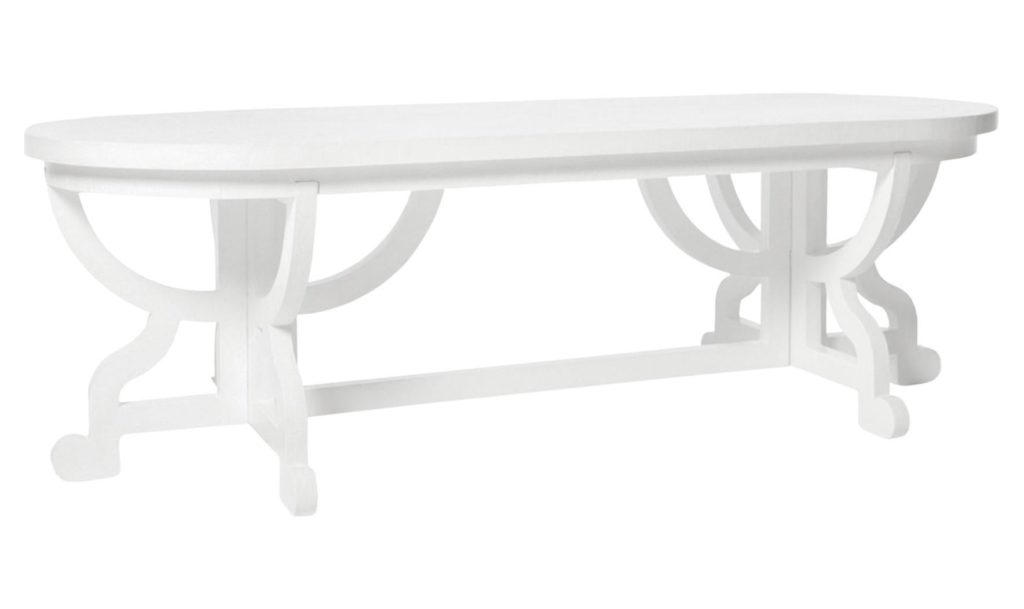
Modern vs. Contemporary Furniture: Spotting the Differences
Historical Roots vs. Current Reflections
One of the defining characteristics of modern furniture is its rootedness in the mid-20th century. This era, often referred to as the mid-century modern period, bore witness to a design revolution, where simplicity, clarity, and functionality were celebrated. This was a response to the complexities of the industrial age. In stark contrast, contemporary furniture, as the name suggests, mirrors the present times. It is a dynamic representation of current societal values, technological advancements, and popular design aesthetics.
Consistency in Principles vs. Adaptive Nature
The beauty of modern design lies in its consistent adherence to a particular set of design principles. These principles centred around minimalism, organic shapes, and high functionality, have remained unchanged since their inception. Conversely, contemporary design is fluid, reflecting the changing nature of our world. It adapts, morphs, and evolves in response to the latest trends, societal shifts, and technological innovations.
Material Choices – Natural vs. Experimental
Both modern and contemporary designs utilize a plethora of materials, but their preferences diverge significantly. Modern furniture often showcases the beauty of natural materials, especially wood, celebrating its grains, textures, and inherent characteristics. Contemporary furniture, on the other hand, isn’t confined to traditional materials. It pushes boundaries, experimenting with sustainable options, recycled materials, or even technologically advanced composites, showcasing innovation in every piece.
A Play of Colours – Earthy vs. Bold
Modern design often exudes a sense of calm and serenity, achieved through its use of neutral and earthy tones. Think beige, olive, taupe, and even muted yellows. This colour palette draws inspiration from nature and is intended to create harmonious interior spaces. In contrast, contemporary design embraces audacity. It doesn’t shy away from using bold colours, stark contrasts, or even metallic hues.
Shapes and Structures – Geometry vs. Fluidity
At the heart of modern design is a love for geometric shapes and clean lines. Whether it’s the sleek silhouette of a sofa or the angular design of a coffee table, modern pieces prioritize clarity in form. In the realm of contemporary design, there’s more freedom. Designers often experiment with fluid shapes, asymmetrical structures, and unconventional forms, resulting in pieces that are as much art as they are functional furniture.
Influences – Localized vs. Global
Modern design, while revolutionary in its time, often drew inspiration from localized sources. It was a reflection of regional materials, local art forms, and cultural nuances. In today’s interconnected world, contemporary design borrows and amalgamates influences from across the globe. It’s not uncommon to see a contemporary piece that marries Scandinavian minimalism with Japanese Wabi-Sabi or Indian intricate detailing, showcasing the beautiful confluence of global design languages.
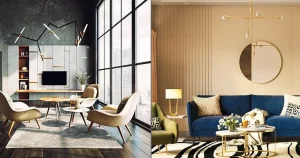
Modern vs Contemporary Furniture: Debunking Common Misconceptions
The overlapping use of the terms “modern” and “contemporary” isn’t accidental. Their interchangeability has roots in various misconceptions that have been perpetuated over time. Let’s demystify some of them:
Evolving Definitions: Many believe that because “contemporary” refers to the present, any modern design becomes contemporary with time. However, while contemporary design does evolve, modern design remains anchored to a specific era.
Visual Similarities: Given that both styles embrace minimalism and simplicity, they can often look superficially similar, leading to confusion.
Inaccurate Labeling: It’s not uncommon to find items mislabeled in stores or online catalogues. For instance, a piece with a clear midcentury design might be labelled as contemporary due to its current popularity.

Modern vs Contemporary Furniture: Decoding Design Distinctions
The journey through the intricacies of “modern vs contemporary furniture” unveils a realm of design deeply rooted in history, culture, and innovation. Though the terms represent distinct styles, both bring a transformative aesthetic to spaces. Personal preference remains the best guide. Delve into both design worlds, mix and match elements, and curate a space that resonates with your taste and lifestyle.
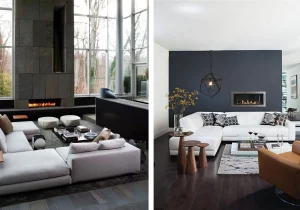
Frequently Asked Questions
Modern design might include mid-century furniture with teak wood and straight, clean lines, while contemporary could be a blend of minimalism with bold, current-day trends.
While the word “contemporary” literally means “of the moment,” in design, it doesn’t strictly mean modern. It encompasses design trends of the current era, which can integrate both modern and traditional elements.
Modern furniture traces its roots to the modernism movement, which began in the early to mid-20th century.
Opt for neutral colors, clean lines, minimalistic furniture, and add a mix of textures and materials like glass, metals, and natural fibers.
By updating finishes, reupholstering with contemporary fabrics, or pairing traditional pieces with modern accents, you can infuse a fresh, contemporary vibe.
